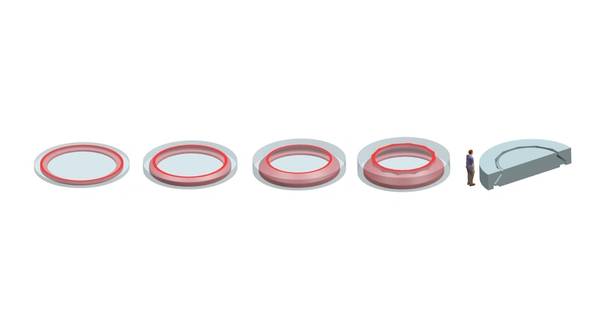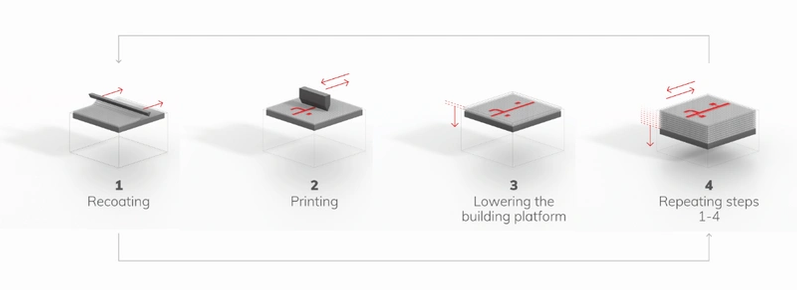
GE Renewable Energy said Thursday it has partnered up with Fraunhofer IGCV and voxeljet AG in a research to develop the world’s largest 3D printer for offshore wind applications in order to speed up the production of key components of GE’s Haliade-X offshore wind turbine.
The Advance Casting Cell (ACC) 3D printer under development will benefit from financial support from the German Federal Ministry for Economic Affairs and Energy and will be capable of printing molds to cast components for the nacelle of the GE Haliade-X that can each weigh more than 60 metric tons, reducing the time it takes to produce this pattern and mold from ten weeks or more to just two weeks.
In addition, GE said, the use of the 3D printer is expected to reduce the product’s carbon footprint by eliminating the need to transport the large parts from a central manufacturing location. The partners expect to launch the project during the third quarter of 2021 with initial printer trials starting during the first quarter of 2022.
The project involves the development of a new, large-format 3D printer capable of producing sand molds for casting the highly complex metal parts of different shapes and sizes that make up an offshore wind turbine nacelle. The modular 3D printing process, which is based on voxeljet’s core “Binder-Jetting” technology, can be configured to print molds for castings up to 9.5 meters in diameter and 60-plus tons in weight, dimensions, the partners said.
Game-changer

The basic binder jetting process is defined by spreading a layer of particle material onto a building platform. Subsequently, a print head applies a binder into the powder bed where the part is to be printed. Then, a new layer of material is applied and the process repeats until the final part or mold is printed. - Credit: voxeljet
Juan Pablo Cilia, Senior Additive Design Engineer at GE Renewable Energy, said, “The 3D printed molds will bring many benefits including improved casting quality through improved surface finish, part accuracy and consistency. Furthermore, sand binder jet molds or additive molds provide cost savings by reducing machining time and other material costs due to optimized design. This unprecedented production technology will be a game-changer for production efficiency allowing localized manufacturing in high cost countries, a key benefit for our customers looking to maximize the local economic development benefits of offshore wind.”
The Fraunhofer Institute for Casting, Composite and Processing Technology IGCV is responsible for casting and materials technology issues as well as digital process monitoring. “We are taking a close look at thermal management during casting, and we will evaluate the ideal proportions of the printing materials,” said Dr. Daniel Günther, Head of Department Molding Processes and Molding Materials at Fraunhofer IGCV.
“Also, we will develop and test new approaches to process monitoring as part of the project.” Based on prior experience the team expects to significantly improve the environmental footprint of processes involved in producing the Haliade-X type wind turbines.
The institute’s director, Prof. Dr. Wolfram Volk, said:“We aim to optimize the mold printing to avoid extremely costly misprints or even miscasts, to save on binder and activator, and to improve mechanical and thermal behavior during casting. By developing a process that conserves resources as much as possible, we want to help to improve the environmental and cost balance in the manufacture of wind turbines.”
Christian Traeger, Director of Marketing and Sales at voxeljet, said, “The test mold we printed for GE in 2019 consisted of dozens of individual parts. With the ACC, we aim to print a significantly reduced number of parts for the full set. Added to that, the mold can be optimized in terms of functionality and material consumption. This optimization makes completely new casting designs possible that can further enhance the efficiency of the turbines.”
“While offsite on-demand 3D printing provides many benefits for small quantities of cast parts, running a 3D printing system on-site leverages the technology to its fullest capacity. Given the demand for offshore wind turbines, that will help a lot to fulfill project schedules and high market demands,”4 adds Dr. Ingo Ederer, CEO at voxeljet. “With our productive “Binder-Jetting” technology in combination with our experience in large format industrial 3D printing, we are serving customers in the foundry industry for over 20 years. It is our mission to bring 3D printing into true industrial manufacturing and we are therefore very excited to be part of this groundbreaking project.”